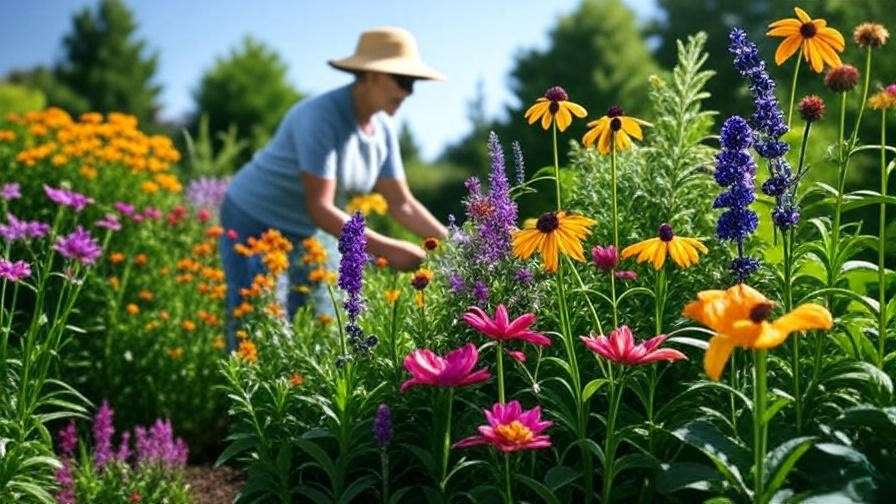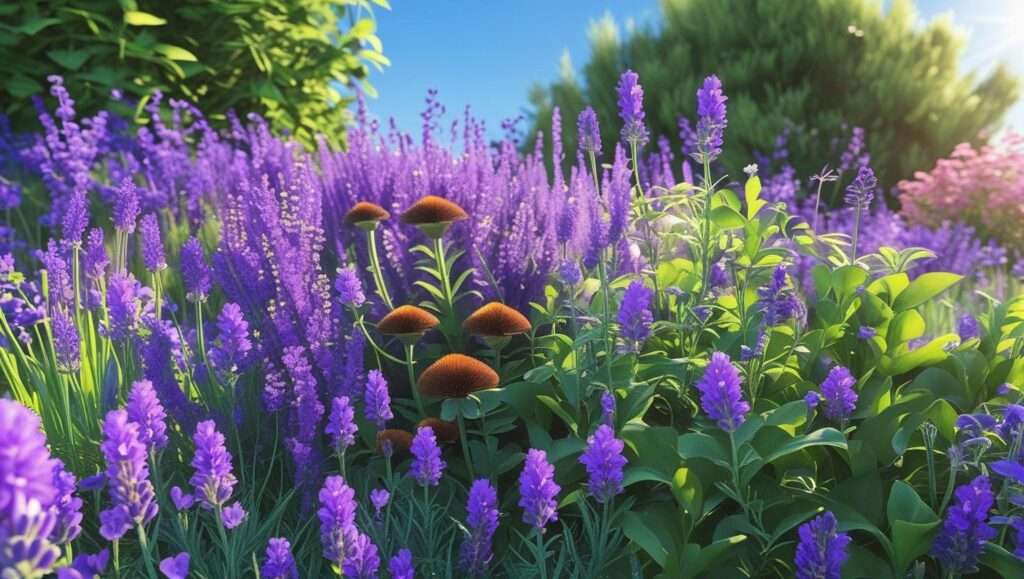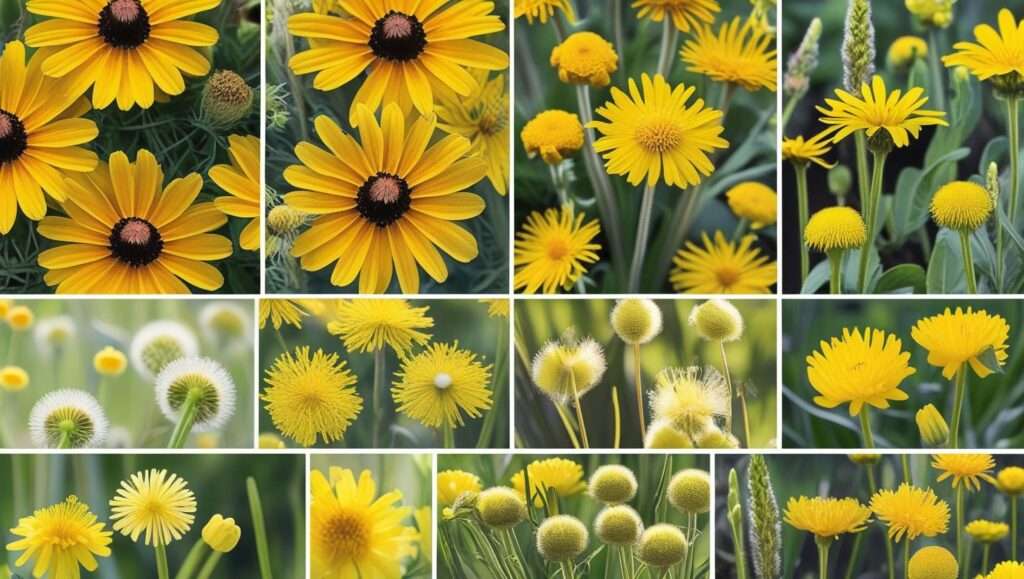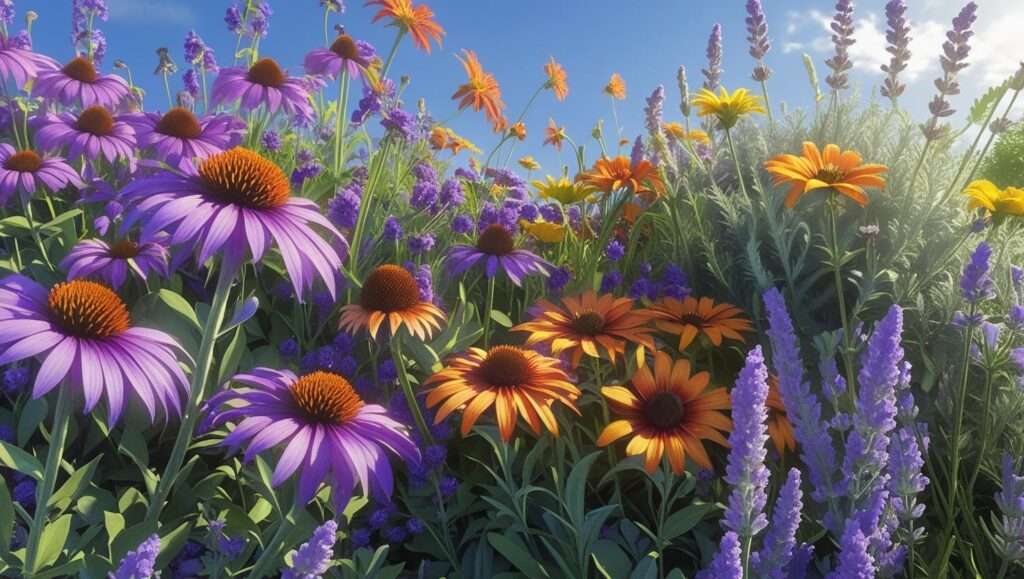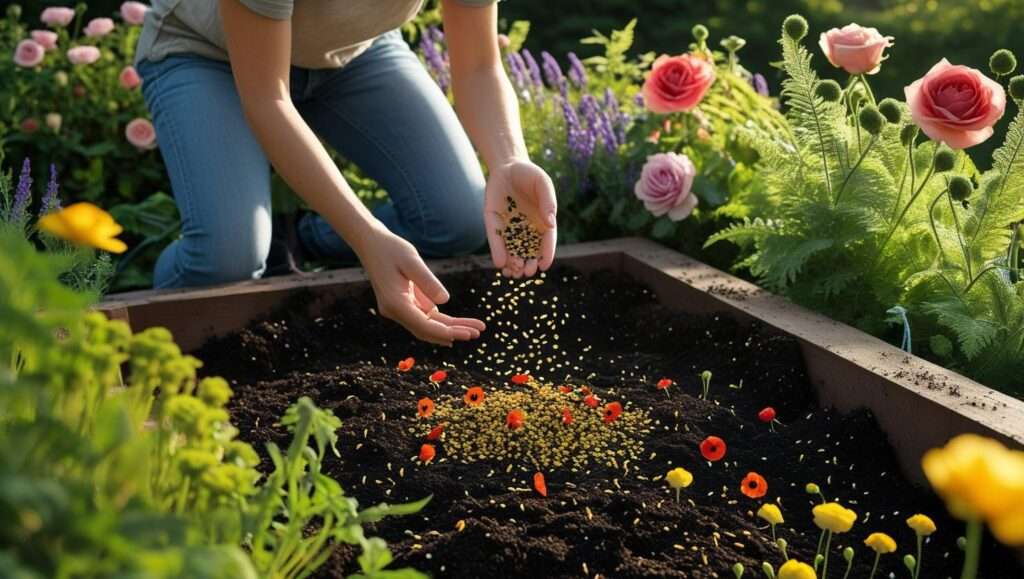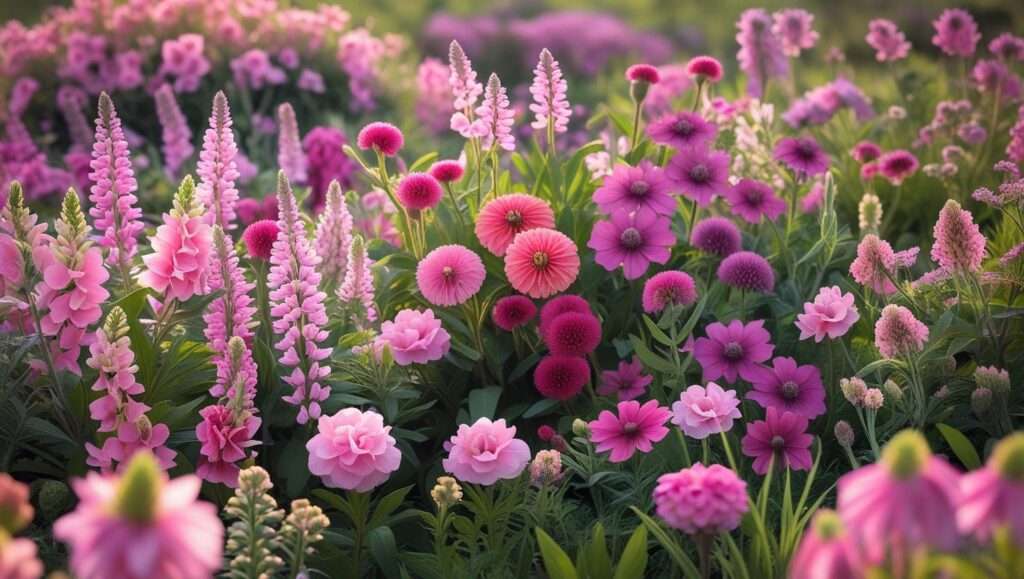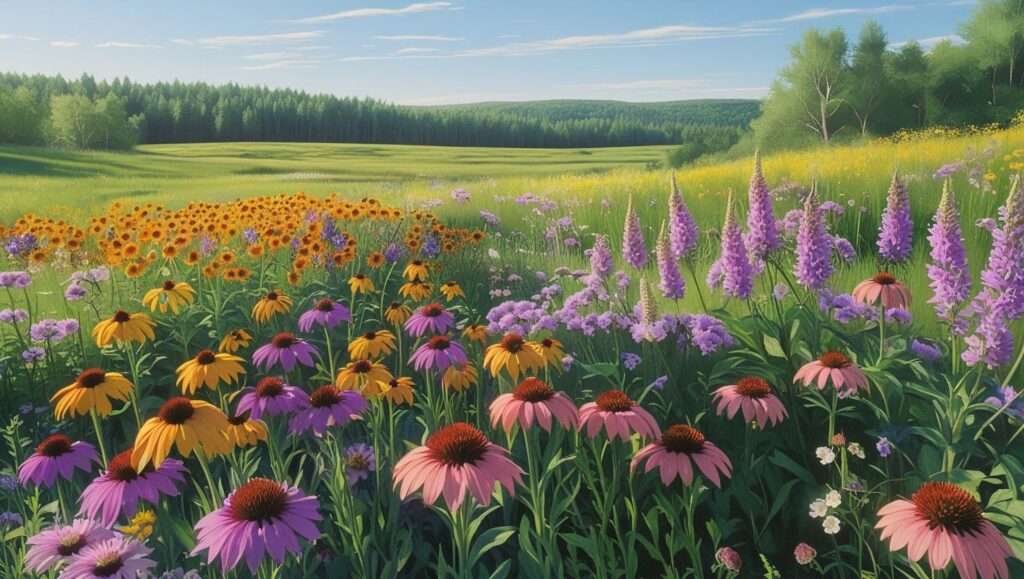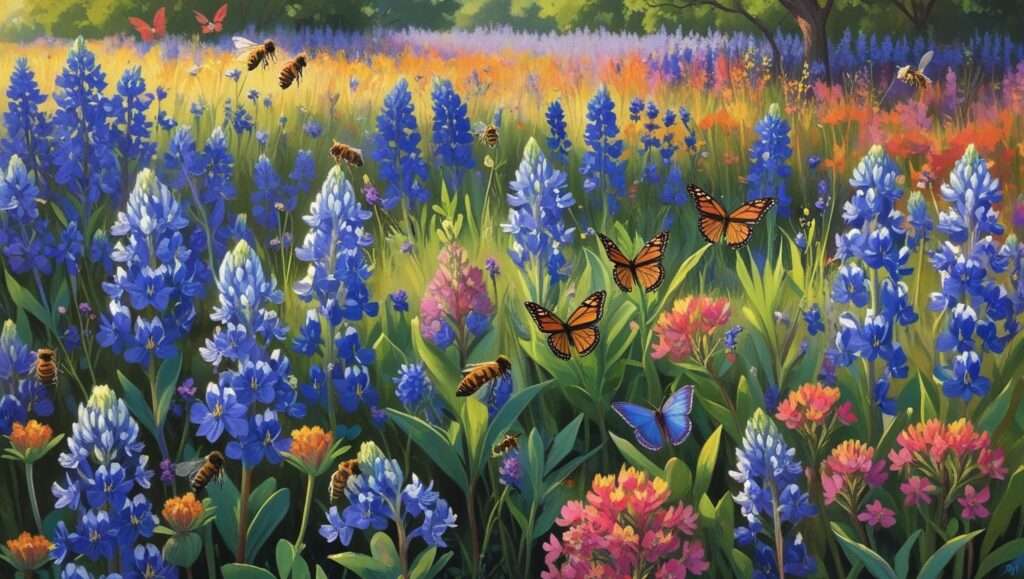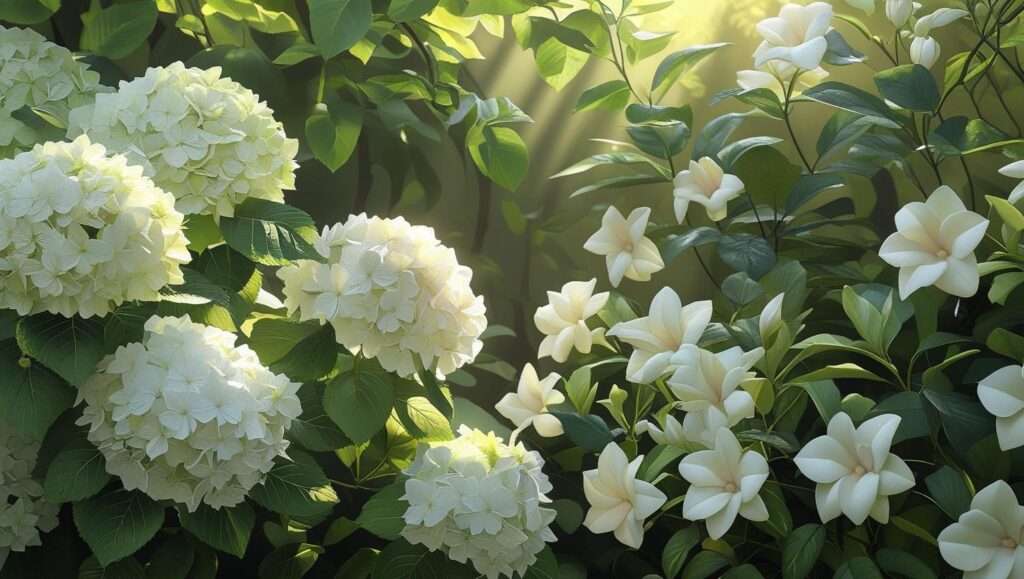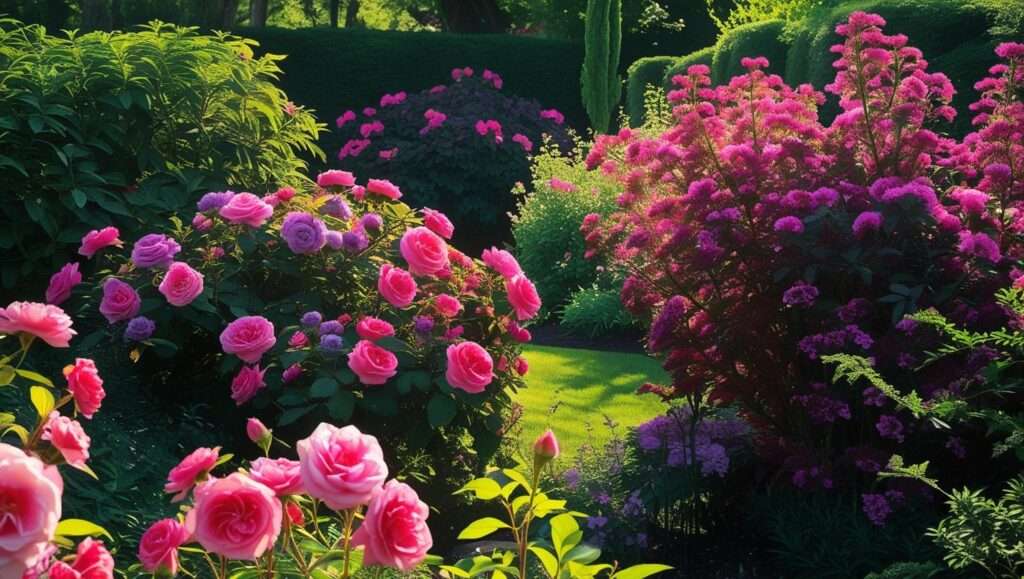Picture a garden that bursts into life each spring, sustains vibrant blooms through summer, and glows with color well into fall—all with minimal effort. For gardeners in USDA Hardiness Zone 7, this dream is within reach, thanks to the region’s mild winters and long growing season, perfect for zone 7 perennials. These resilient plants return year after year, offering beauty, low maintenance, and solutions to common gardening challenges like seasonal color gaps. In this guide, you’ll discover 10 expertly selected perennials tailored for Zone 7, complete with care tips, design ideas, and practical advice to create a thriving, colorful landscape. As a horticulturist with over 15 years of experience specializing in Zone 7 gardening, I’ve curated this list to help you transform your garden into a year-round masterpiece.
Understanding Zone 7 and Its Gardening Benefits
What Is USDA Hardiness Zone 7?

USDA Hardiness Zone 7 spans regions with average minimum winter temperatures between 0°F and 10°F. This zone includes parts of states like Virginia, North Carolina, Tennessee, Arkansas, and Oklahoma, where gardeners enjoy a balanced climate of mild winters and warm, extended summers. This unique environment supports a diverse range of plants, making it ideal for growing hardy perennials that thrive in fluctuating conditions. According to the USDA Plant Hardiness Zone Map, Zone 7’s climate allows plants to establish strong root systems, ensuring longevity and resilience.
Why Perennials Are Perfect for Zone 7
Perennials are the backbone of any low-maintenance garden, and Zone 7’s climate amplifies their appeal. Unlike annuals, which require replanting each year, perennials return seasonally, saving time and money. Their deep root systems make them drought-tolerant and adaptable to the region’s occasional cold snaps or hot summers. “Zone 7 offers a sweet spot for perennials,” says Dr. Emily Carter, a horticulturist at the University of Tennessee’s Agricultural Extension Service. “The mild winters allow plants to overwinter successfully, while the long growing season maximizes bloom time.” With proper selection, Zone 7 perennials provide vibrant color, attract pollinators, and require minimal upkeep.
Top 10 Zone 7 Perennials for Year-Round Color

The following perennials were chosen for their stunning aesthetics, hardiness, and ability to thrive in Zone 7’s unique climate. Each offers long bloom periods, low maintenance, and adaptability to various soil types, ensuring a garden that stays colorful from spring to fall.
1. Black-Eyed Susan (Rudbeckia fulgida)
Description: Black-Eyed Susan’s cheerful yellow petals surround a dark brown center, blooming from summer to early fall.
Benefits: This native perennial is drought-tolerant, attracts bees and butterflies, and thrives in Zone 7’s varied conditions.
Care Tips: Plant in full sun with well-drained soil. Deadhead spent blooms to extend flowering. Water moderately until established.
Design Idea: Pair with ornamental grasses like switchgrass for a prairie-inspired look that enhances your garden’s natural beauty.
Expert Insight: “Rudbeckia’s resilience makes it a must-have for Zone 7 gardens,” notes Carter, who recommends the ‘Goldsturm’ variety for its compact growth.
2. Coneflower (Echinacea purpurea)
Description: Known for its vibrant purple-pink petals, coneflower blooms from early summer to fall, adding bold color.
Benefits: Deer-resistant and packed with medicinal properties, it’s a pollinator magnet and thrives in Zone 7’s climate.
Care Tips: Plant in full sun to partial shade with moderate watering. Avoid soggy soils to prevent root rot.
Design Idea: Use coneflowers in mixed borders with daylilies for a vibrant, pollinator-friendly display.
Expert Tip: Opt for native cultivars like ‘Magnus’ for superior hardiness and longer blooms.
3. Daylily (Hemerocallis spp.)
Description: Daylilies offer a rainbow of colors, with blooms from spring to summer, and some varieties rebloom into fall.
Benefits: Highly adaptable to Zone 7’s clay or sandy soils, they’re low-maintenance and prolific bloomers.
Care Tips: Divide clumps every 3-5 years to maintain vigor. Plant in full sun or partial shade with regular watering.
Design Idea: Create bold borders or mass plantings with varieties like ‘Stella d’Oro’ for continuous color.
Expert Insight: “Daylilies are the workhorses of Zone 7 gardens,” says local nursery owner Mark Reynolds.
4. Salvia (Salvia nemorosa)
Description: Spiked purple or blue flowers bloom from spring to fall, creating a striking vertical accent.
Benefits: Drought-tolerant and deer-resistant, salvia attracts hummingbirds and thrives in Zone 7’s heat.
Care Tips: Plant in full sun and cut back after the first bloom to encourage reblooming. Avoid overwatering.
Design Idea: Use salvia as a backdrop for shorter perennials like coreopsis for a layered effect.
Expert Tip: The ‘Caradonna’ variety offers deep purple stems and extended bloom time, perfect for Zone 7.
5. Hosta (Hosta spp.)
Description: Renowned for lush foliage in shades of green, blue, or variegated patterns, hostas bloom with delicate flowers in summer.
Benefits: Ideal for shady Zone 7 gardens, they’re low-maintenance and add texture to landscapes.
Care Tips: Plant in moist, well-drained soil. Protect from slugs with organic barriers like crushed eggshells.
Design Idea: Combine with ferns and astilbe for a serene woodland garden aesthetic.
Expert Insight: “Hostas are a shade gardener’s dream,” says Reynolds, recommending ‘Blue Angel’ for Zone 7.
6. Catmint (Nepeta faassenii)
Description: Lavender-blue flowers bloom from spring to fall, with aromatic foliage that adds sensory appeal.
Benefits: Deer-resistant and a pollinator favorite, catmint is perfect for Zone 7’s sunny slopes or borders.
Care Tips: Plant in full sun and cut back after the first bloom to promote reblooming.
Design Idea: Use as a groundcover or edging plant to soften garden paths.
Expert Tip: ‘Walker’s Low’ is a compact variety ideal for smaller Zone 7 gardens.
7. Coreopsis (Coreopsis verticillata)
Description: Bright yellow flowers bloom from summer to fall, creating a sunny, cheerful display.
Benefits: Drought-tolerant and easy to propagate, coreopsis thrives in Zone 7’s conditions.
Care Tips: Plant in full sun with well-drained soil. Deadhead to extend blooms.
Design Idea: Pair with salvia or coneflower for a vibrant, contrasting color scheme.
Expert Insight: The ‘Moonbeam’ variety is a Zone 7 favorite for its delicate, airy blooms.
8. Russian Sage (Perovskia atriplicifolia)
Description: Airy blue-purple spikes bloom from late summer to fall, adding a soft, ethereal look.
Benefits: Heat-tolerant and low-water, it’s ideal for Zone 7’s hot summers.
Care Tips: Plant in full sun and avoid overwatering. Prune in early spring for bushier growth.
Design Idea: Use as a backdrop in mixed borders with Black-Eyed Susan for contrast.
Expert Tip: “Russian sage’s silvery foliage adds year-round interest,” says Carter.
9. Peony (Paeonia lactiflora)
Description: Large, fragrant blooms in shades of pink, white, or red grace spring gardens.
Benefits: Long-lived (up to 50 years), deer-resistant, and a Zone 7 standout.
Care Tips: Plant shallowly in full sun or partial shade. Provide support for heavy blooms.
Design Idea: Use as a focal point in mixed borders with catmint or salvia.
Expert Insight: ‘Sarah Bernhardt’ is a classic variety for Zone 7’s climate.
10. Sedum (Sedum spectabile)
Description: Succulent foliage and star-shaped pink or red blooms shine from late summer to fall.
Benefits: Drought-tolerant and butterfly-friendly, sedum thrives in Zone 7’s conditions.
Care Tips: Plant in full sun with well-drained soil. Avoid overwatering.
Design Idea: Use in rock gardens or as a border with coreopsis.
Expert Tip: ‘Autumn Joy’ is a top pick for its vibrant fall color.
Designing a Year-Round Color Garden with Zone 7 Perennials
Planning for Continuous Blooms

To achieve a garden that stays colorful from spring to fall, stagger bloom times strategically. For example, peonies kick off the season in spring, followed by daylilies and coneflowers in summer, with Black-Eyed Susan, Russian sage, and sedum extending color into fall. A planting calendar for Zone 7 might include:
- Spring: Peonies, salvia, catmint.
- Summer: Daylilies, coneflowers, Black-Eyed Susan, coreopsis.
- Fall: Sedum, Russian sage, reblooming salvia.
“Layering bloom times creates a dynamic garden,” says landscape designer Laura Jenkins, who recommends mapping out your garden’s bloom schedule annually.
Combining Perennials for Maximum Impact
Color theory enhances garden aesthetics. Pair complementary colors (e.g., yellow coreopsis with purple salvia) or contrasting textures (e.g., hosta’s broad leaves with Russian sage’s airy spikes). Vary plant heights for depth: tall Russian sage in the back, medium-height coneflowers in the middle, and low-growing catmint in front. A sample layout for a 10×10-foot Zone 7 garden:
- Back Row: Russian sage, peonies.
- Middle Row: Coneflowers, daylilies, Black-Eyed Susan.
- Front Row: Catmint, coreopsis, sedum.
This design ensures visual flow and year-round interest.
Addressing Common Zone 7 Challenges
Zone 7 gardens often face clay or sandy soils. Amend clay with compost to improve drainage and sandy soils with organic matter to retain moisture. Protect perennials from occasional freezes with a 2-3 inch layer of mulch in late fall. Combat pests like deer with resistant plants (salvia, coneflower) and diseases like powdery mildew by ensuring good air circulation and avoiding overhead watering.
Care and Maintenance Tips for Zone 7 Perennials
Soil Preparation and Planting

Most Zone 7 perennials prefer well-drained, loamy soil with a pH of 6.0-7.0. Test your soil and amend with compost or aged manure before planting. Spring and fall are ideal planting times, allowing roots to establish before extreme weather. Dig holes twice as wide as the root ball and plant at the same depth as the nursery pot.
Watering and Fertilizing
Newly planted perennials need regular watering (1 inch per week) until established. Once mature, most Zone 7 perennials are drought-tolerant, requiring water only during prolonged dry spells. Use organic fertilizers like fish emulsion or compost tea in spring to boost growth. “Over-fertilizing can lead to weak stems,” warns Reynolds, recommending a balanced 10-10-10 fertilizer sparingly.
Pruning and Deadheading
Pruning enhances plant health and aesthetics. Cut back Russian sage and salvia in early spring to promote bushy growth. Deadhead coneflowers, Black-Eyed Susan, and coreopsis to extend blooms. A seasonal maintenance checklist:
- Spring: Prune, fertilize, and mulch.
- Summer: Deadhead and monitor for pests.
- Fall: Cut back spent foliage, divide overcrowded clumps.
- Winter: Apply mulch for cold protection.
Environmental Benefits of Growing Zone 7 Perennials
Zone 7 perennials support local ecosystems. Black-Eyed Susan, coneflower, and salvia attract bees, butterflies, and hummingbirds, boosting pollination. Drought-tolerant varieties like sedum and Russian sage reduce water usage, conserving resources. Native perennials like coreopsis improve soil health by stabilizing it with deep roots, preventing erosion.
Common Mistakes to Avoid with Zone 7 Perennials
- Overwatering: Leads to root rot in sedum and salvia. Check soil moisture before watering.
- Wrong Light Conditions: Planting hostas in full sun or Russian sage in shade reduces vigor.
- Neglecting Maintenance: Failing to divide daylilies or prune salvia results in reduced blooms.
“Last year, I overwatered my sedum, and it nearly died,” shares Zone 7 gardener Sarah Thompson. “Now I let the soil dry out completely between waterings.”
FAQs About Zone 7 Perennials
Q: What are the best low-maintenance perennials for Zone 7?
A: Daylilies, sedum, and coreopsis require minimal care, thriving in Zone 7’s climate with occasional watering and deadheading.
Q: Can Zone 7 perennials survive occasional freezes?
A: Yes, apply 2-3 inches of mulch in late fall to insulate roots. Peonies and coneflowers are particularly cold-hardy.
Q: How do I choose perennials for a small garden?
A: Opt for compact varieties like ‘Walker’s Low’ catmint or ‘Moonbeam’ coreopsis to maximize space.
Q: When should I plant perennials in Zone 7?
A: Spring (March-April) or fall (September-October) are ideal for root establishment.
Q: Are these perennials deer-resistant?
A: Salvia, coneflower, and catmint are highly deer-resistant, making them great choices for Zone 7 gardens.
Conclusion
Zone 7 perennials like Black-Eyed Susan, coneflower, and peonies offer a low-maintenance, eco-friendly way to create a vibrant, year-round garden. By selecting the right plants, planning for continuous blooms, and following expert care tips, you can transform your landscape into a colorful haven. Start planning your garden today using this guide, and share your favorite Zone 7 perennials in the comments or on social media. As a certified horticulturist and contributor to regional gardening publications, I’m confident these plants will elevate your garden to new heights.

